| | What's in Flower in August
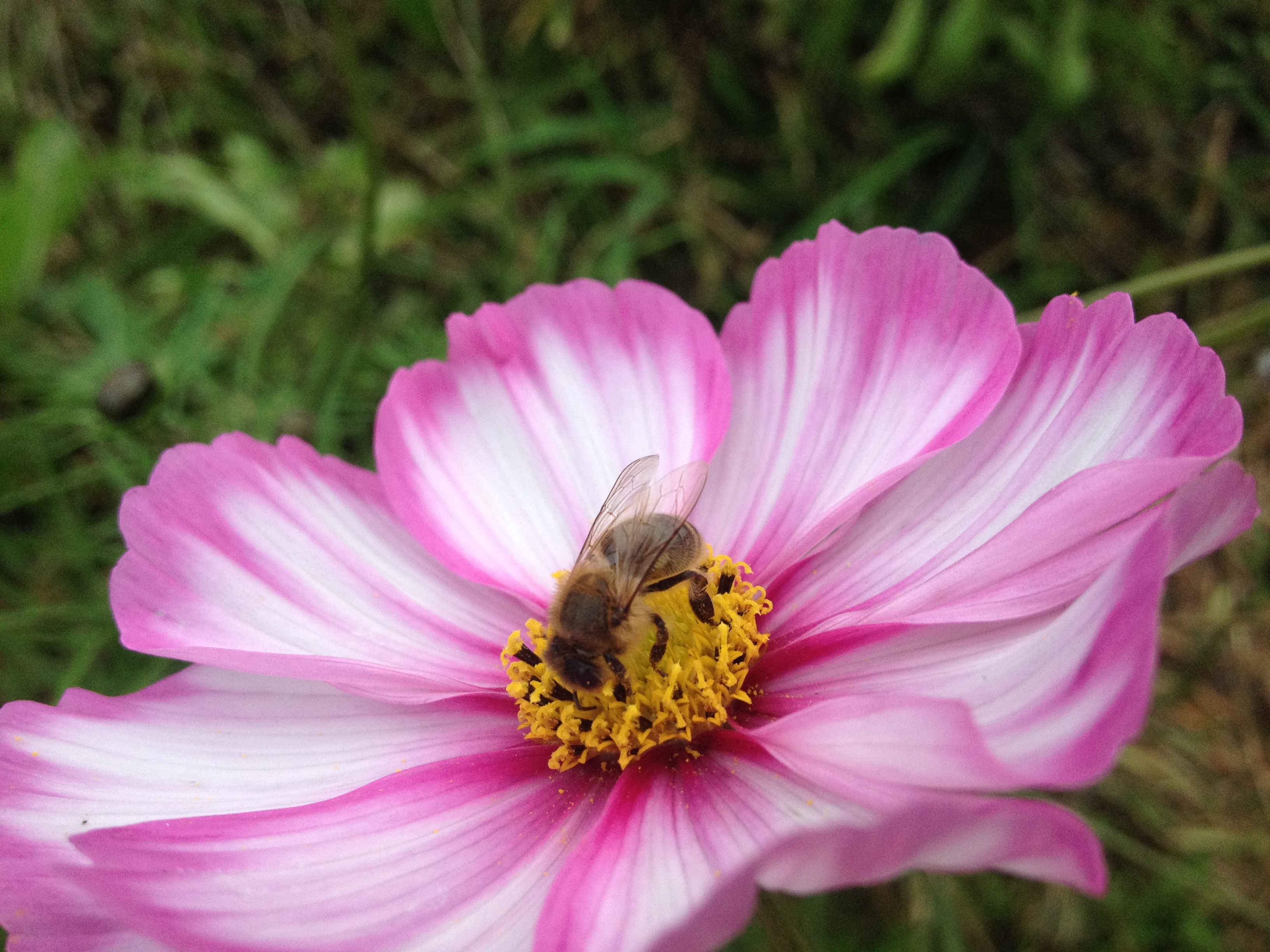 Cosmos. 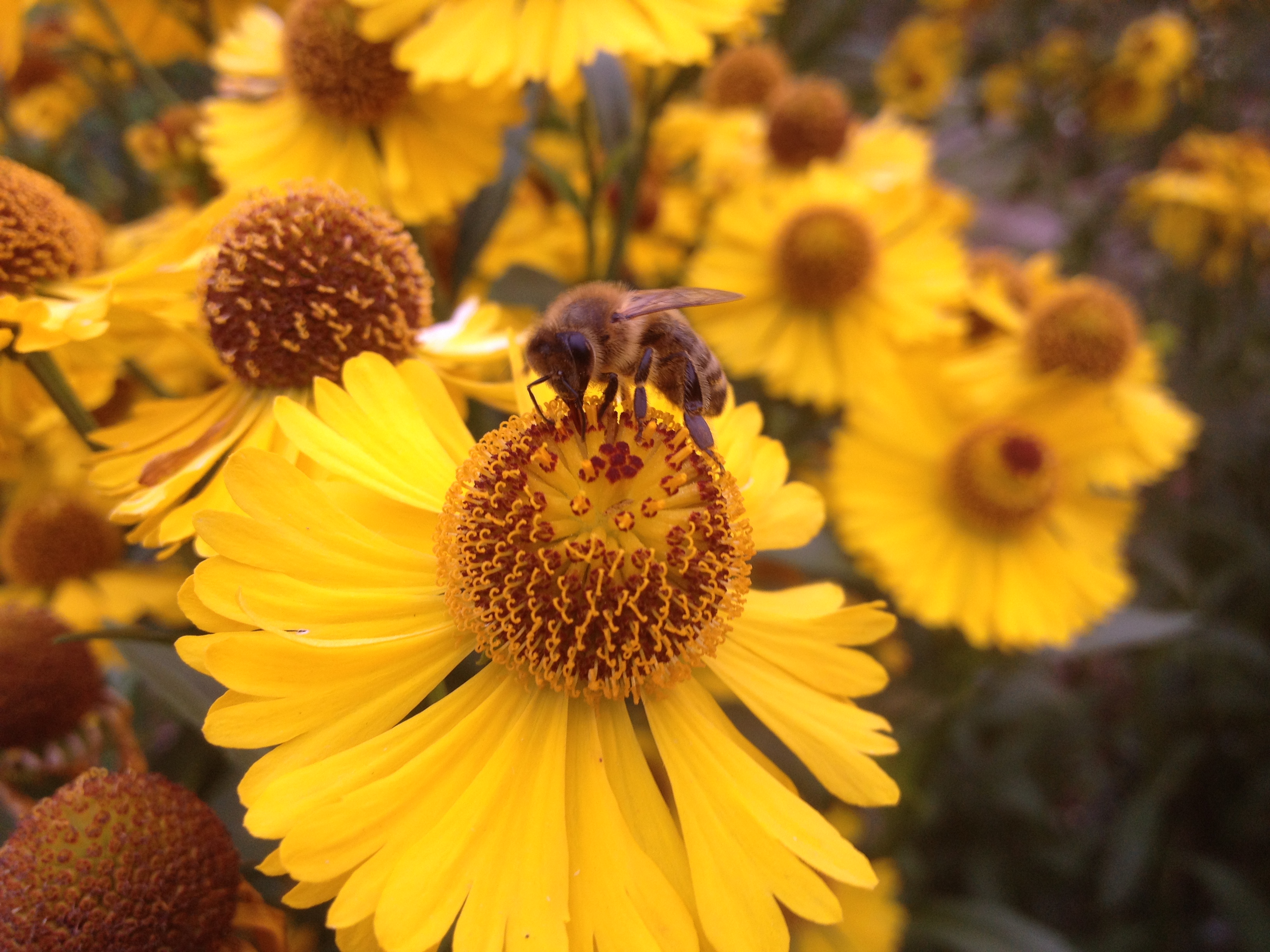 Helenium. 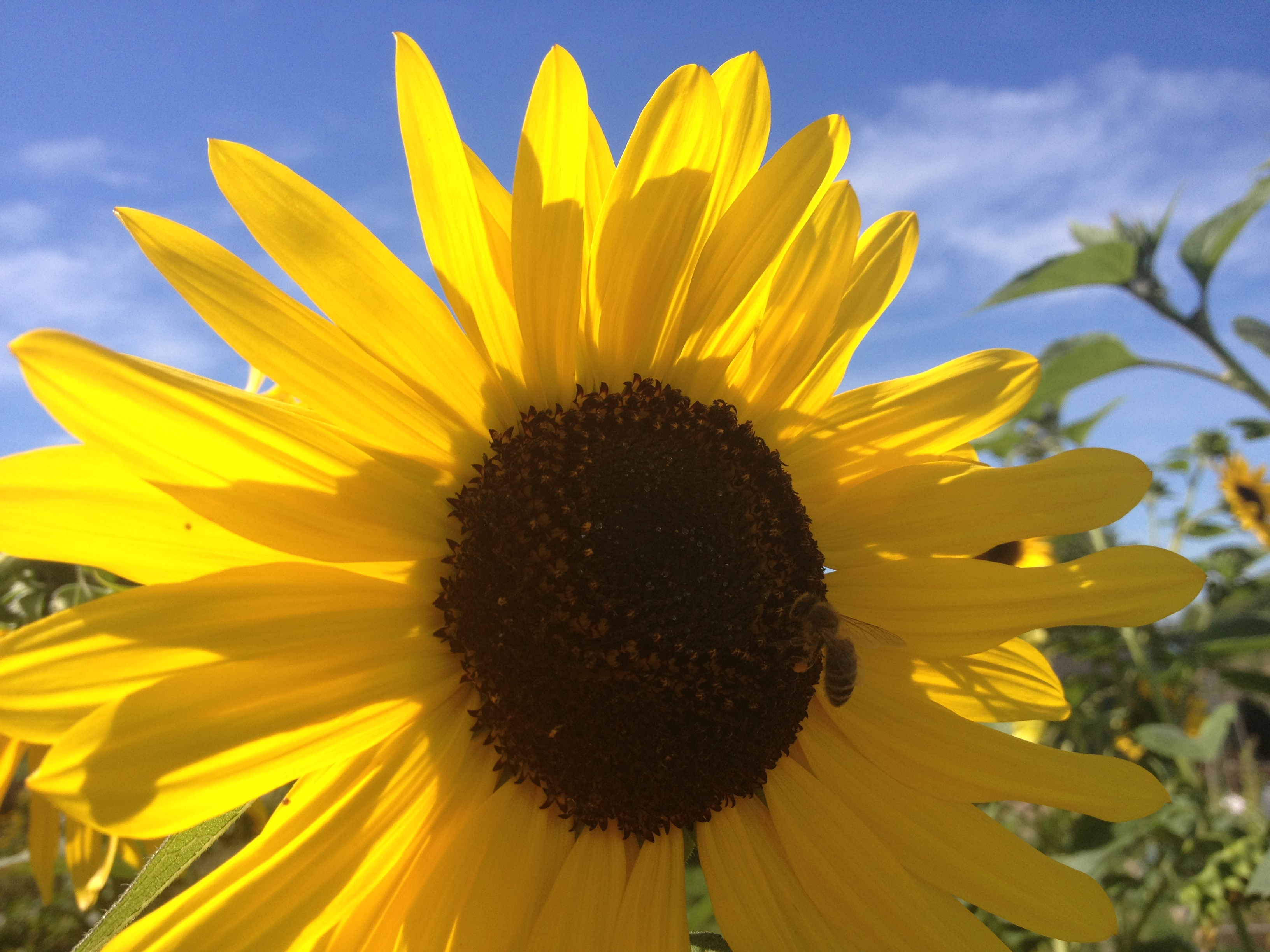 Sunflower. 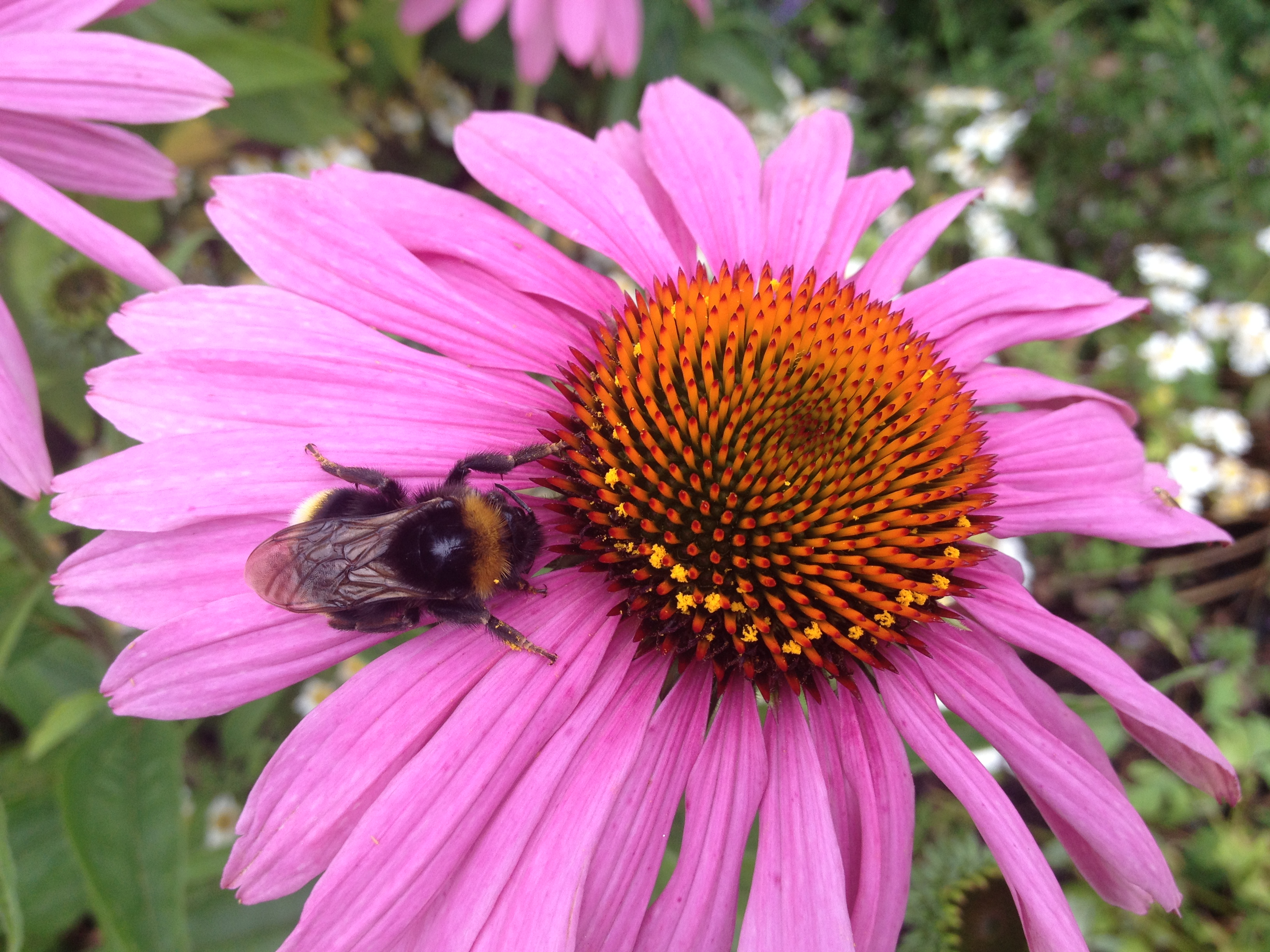 Echinacae. 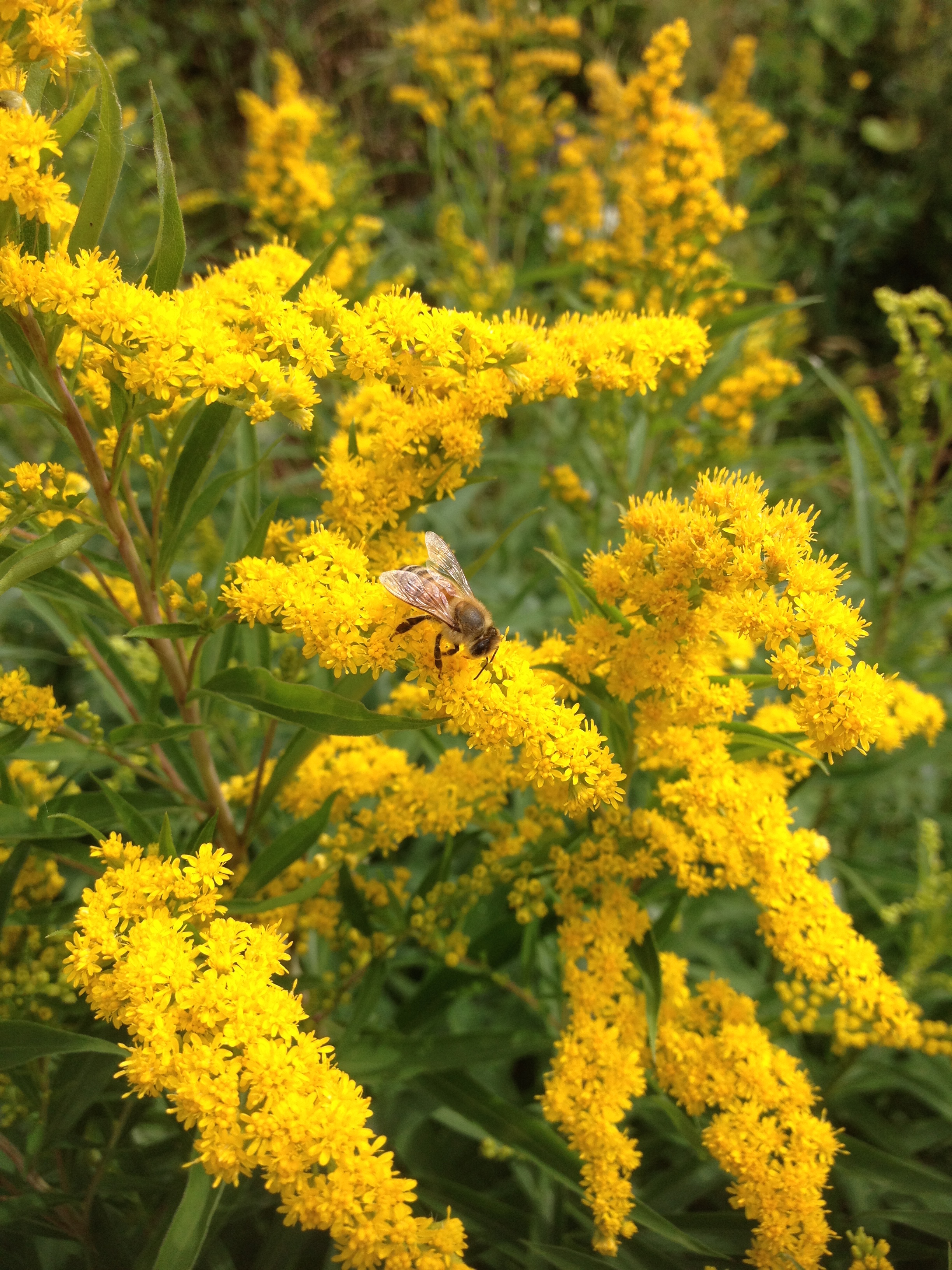 Golden rod. 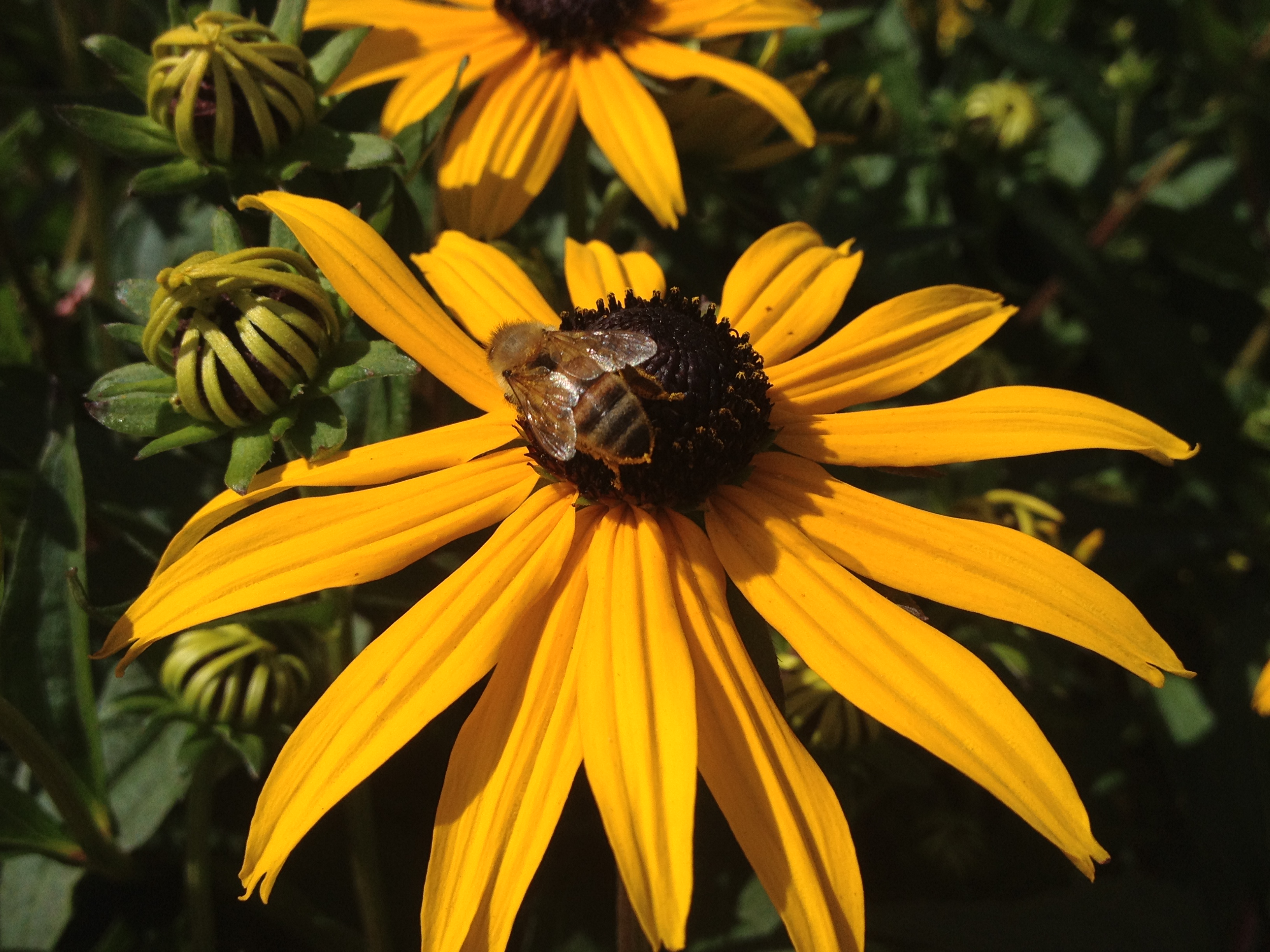 Rudbeckia.
[What's in flower, month by month]
Mark Patterson
LBKA Forage Officer
Late summer for the bees is one of the most desperate times of the year when they can struggle the most to find enough food to eat. Many people find this fact difficult to believe if the weather is often hot and sunny and presumably great for the bees but it is in fact often one of the leanest times for the busy insects. At this time of year colonies are large with many mouths to feed and as the beekeeper has removed the honey crop the flowers are also diminishing in abundance meaning the bees can struggle to replace honey which has been taken off. For this reason it's crucial not to be over-greedy and take all the honey leaving the bees with no stores for themselves.
Come late summer the majority of our nectar-rich native wild plants have ceased flowering and gone to seed, especially woodland and meadow flowers whose flowering period is in rhythm with the closing of the woodland canopy and cutting of meadows for hay. Bramble and all our native trees have also long since finished flowering and are now sporting fruits and seeds leaving little for the bees.
Away from heather moorland and heath, the only real bountiful sources of forage from native wild plants are Greater willow herb, thistles, ragwort, bindweed and hogweed - though many of these are early this year and already going over. Along water courses purple loosestrife, marsh woundwort, water mint and the invasive Himalayan balsam provide welcome relief but not all colonies are in range of such localised sources of forage.
Late summer is one of the largest gaps in forage during the beekeeping season and ends with the brief glut of nectar provided by ivy flowering in the autumn. Ivy is the last opportunity for our bees to stock up for winter and for wild pollinators a chance to fuel migrations south to warmer climates or for females to fatten up in readiness for hibernation.
Research conducted by our friends at the University of Sussex has demonstrated that honey bees fly furthest to find forage in late summer with record flights of 12km being undertaken in August. In the case of the Sussex research it was found that honey bees were flying 12km to visit gardens in town centres where domestic gardens and public parks planted with bee friendly summer flowers were providing much of their forage needs. This goes to show just how important our urban gardens are for bees at this time of the year.
Many garden plants that are great for bees in late summer originate from North America where they grow in prairie habitats and have evolved to flower late in the summer and autumn avoiding the extreme heat experienced earlier in the season. Some good examples include rudbeckia, echinacea, solidago (Golden Rod) of which there are hundreds of varieties, gallardia, penstemons, helianthus (perennial sunflowers), verbena - particularly the species bonariensis and hastata. Probably the most attractive of all the North American plants grown in gardens for bees are the heleniums. Known as sneezeworts these late summer flowering perennials come in a variety of colours ranging from yellows, orange and intense reds. They are a magnet for bees and very easy to grow even on relatively poor soils. If `Chelsea-chopped' in June they can provide a succession of blooms from late July right through to the first frosts of autumn.
Other plants attractive to bees include the South African Eucomis or "Pineapple Lily". These plants are bulbous sporting a rosette of fleshy green leaves in summer followed by spikes of pineapple looking flowers in late summer and autumn. They come in a variety of colours from lime-green to pink and purple, some with flecks of red on the petals and flower stalk. Bees relish the pollen and nectar they provide and they are very easy to grow, being surprisingly hardy for such an exotic looking flower. Other South African plants attractive to bees include knifophia - the red hot pokers and Agapanthus. Knifophia have very long flower trumpets which have evolved to be pollinated by sunbirds. The flowers are hot shades of yellow, orange and red specifically to attract these birds which have very long bills and tongues equipped to pollinate the flowers. Whilst none of our native bees have the equipment needed to pollinate the blooms they can still extract the rich nectar from the flowers as it often drips and runs out of the flower trumpet and down the flower stem. Agapanthus are of limited usefulness to our native bees but the Common Carder Bumble Bee does seem to like them and I have often seen them foraging on Agapanthus in my own garden.
From South and Central America cosmos, dahlias and zinnia flowers are very attractive to bees providing nectar and pollen. The best varieties of course are the single open flowered types such as the Bishop series dahlias. My person favourite is "Bishop of Llandaff" with its bright red petals and dark centre covered in bright yellow pollen.
From New Zealand one of the best garden plants this month and widely planted in amenity spaces are the shrubby veronicas we know as hebe bushes. Right now hebe "Great Orme" is in flower on housing estates all across London and you can seldom walk past a specimen that's not covered in pollinators. Later on nearer autumn the variety "Autumn Glory" come into its own with its darker purple blooms that persist well beyond the first light frosts of autumn.
From China the Sedum spectabile "Autumn Joy" is a staple of gardens across the country in September when its cheerful pink heads of flowers brighten up the garden attracting bees, butterflies and hoverflies in abundance.
Another source of forage for bees in late summer comes in the form of overripe fruits. I have on several occasions witnessed honey bees sipping the sweet juices from bird damaged figs, blackberries and plums on my allotment alongside wasps and flies. This is probably not a widespread habit among honey bees nor a substantial source of forage for them but it's interesting to see how the bees do take advantage of the most unsuspecting resources during lean times.
This past week whilst walking down a south London street I came across a tall hibiscus bush in bloom that was covered in foraging honey bees. This was the first and only time I've ever seen a bee on a hibiscus bush. I have a beautiful purple flowered variety planted in my garden (on the burial site of my long deceased parrot who had purple wings) which fails every year to attract any bees at all and elsewhere I've never seen any bees on hibiscus. This bush I saw the bees foraging on was a white coloured variety with semi double blooms. The bees appeared to be collecting nectar but were getting a good dusting of pale pollen at the same time.
|







